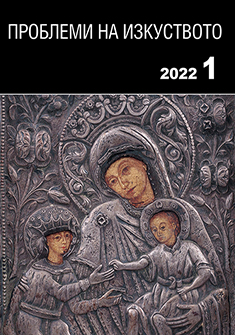Мистичният годеж на св. Екатерина с Христос – една непубликувана икона от Музея за християнско изкуство в София (предварителни наблюдения)
The Mystical Marriage of St Catherine to Christ: An Unpublished Icon from the Museum of Christian Art, Sofia (Preliminary Observations)
Author(s): Ralitsa RoussevaSubject(s): Fine Arts / Performing Arts, Visual Arts, History of Art
Published by: Институт за изследване на изкуствата, Българска академия на науките
Keywords: St Catherine; icons; post-Byzantine art; the Mystical Marriage of St Catherine to Christ; Cretan painters; Ortaköy
Summary/Abstract: This article deals with a very rare occurrence in the iconography of the Christian orthodoxy, the so-called Mystical Marriage of St Catherine of Alexandria to Christ. For the lavishly embossed revetment of the icon, a thick sheet of silver, exclusively wrought for the purpose, was used. In the bottom area of the icon, the year 1817 and the signature of the painter John are inscribed. The legend of the mystical marriage of St Catherine is not found in the Byzantine vitae of the saint and was included for the first time in the Book New Paradise by the monk Agapios Landos of Crete, published in Venice, in 1664. The subject emerged in the Orthodox art in the sixteenth century, in the artworks of Cretan painters influenced by the Italian painting; still, the examples are just a few. Since the late seventeenth century the Mystical Marriage of St Catherine has been included as a scene in composite hagiographic icons and prints. The icon from Sofia is among those isolated examples in the Balkan Orthodox art that treat the Mystical Marriage of St Catherine of Alexandria. The rest of the artworks dealing with the same subject differ widely by composition and iconography. The painter is well versed; his style is notable for blending West-European influence with the post-Byzantine tradition. On the verso of the board, a sheet is glued with fragmentally damaged text in Greek, showing that the icon has been presented on 26 October 1843 in Ortakoy to a Thrasivoulos on the occasion of the latter’s twenty-fifth birthday by his godfather. There is uncertainty about which place is referred to, but most probably in the nineteenth century it was in Istanbul’s Ortakoy neighbourhood. The icon could have originated from any production place, still, the used precious materials such as silver and gold and the painter’s artistry of a high order suggest that it has been made in a great centre of art.
Journal: Проблеми на изкуството
- Issue Year: 2022
- Issue No: 1
- Page Range: 13-19
- Page Count: 7
- Language: Bulgarian
- Content File-PDF

